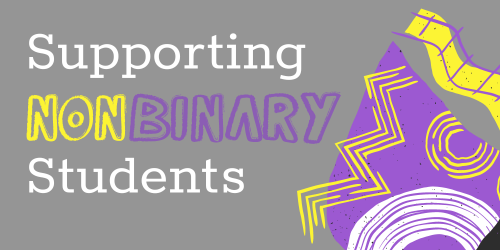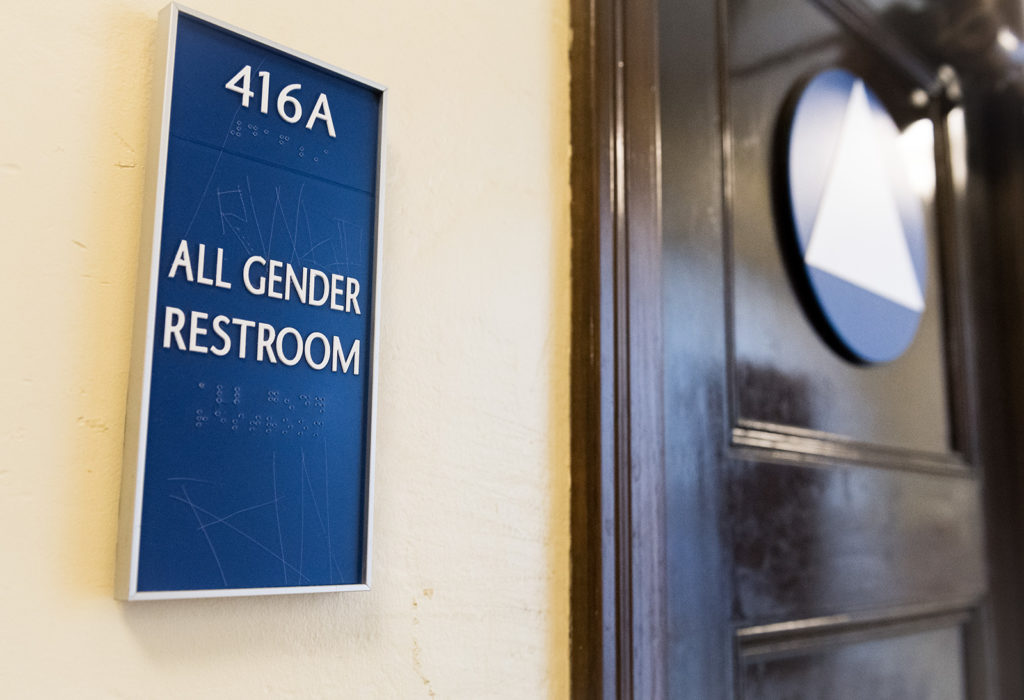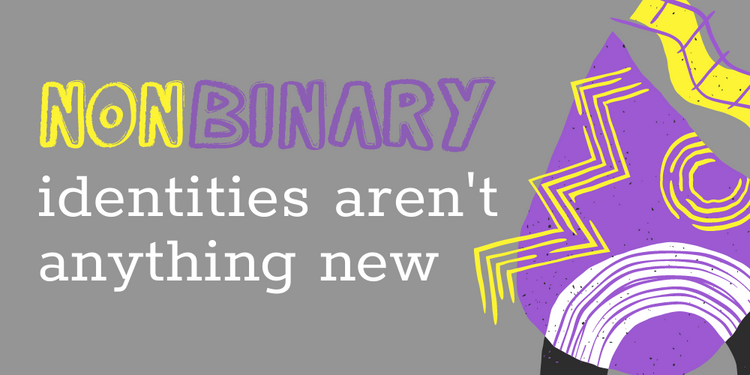Supporting Nonbinary Students

by Point Community College Alum Alexzander
Nonbinary individuals are often subject to criticism and ridicule as a result of their complex identities, sometimes even from members of the LGBTQ+ community. This comes on top of the struggles that nonbinary people already experience as transgender individuals, with many suffering from gender dysphoria, discrimination, and harassment. Let us keep in mind that nonbinary individuals need just as much support and respect as binary transgender people, especially when it comes to transitioning.
Nonbinary Definition
The majority of transgender people are binary, meaning that they identify as male or female and align their identities with the gender binary. A smaller portion of transgender individuals are nonbinary, meaning that they don’t identify exclusively as male or female. Nonbinary identities can take on different forms, where some nonbinary people may identify somewhere in the middle of the typical gender binary or fluctuate between it, while others may remove themselves from it entirely. To represent these variations, those under the nonbinary umbrella can use a variety of terms to describe their identities, including but not limited to genderfluid, agender, and genderqueer.
Non-binary people share similar experiences to binary transgender individuals in regard to experiencing gender incongruence/dysphoria and choosing to transition but may differ in their choice of presentation and pronouns. Because non-binary individuals don’t strictly identify as male or female, presenting as solely feminine or masculine can be uncomfortable and dysphoria-inducing, regardless of their assigned gender. As a result, non-binary people will often choose to express their gender by opting for more androgynous clothing, hairstyles, and names. Similarly, many nonbinary people feel more comfortable using gender-neutral pronouns such as they/them (which are grammatically correct, by the way) or xe/xem instead of pronouns that are traditionally tied to a specific gender such as she/her and he/him.
Nonbinary Pronouns
When referring to a nonbinary individual, always use their correct pronouns. Using the right pronouns is a matter of showing respect to the person and their gender identity. Choosing to not use the correct pronouns, otherwise known as misgendering, can be extremely hurtful and exacerbate gender dysphoria. If you’re unsure of a nonbinary person’s pronouns, it’s best to ask them directly, preferably in a private setting. Assuming pronouns based on a person’s appearance disregards the fact that gender expression can differ from gender identity.
While it may seem like an uncomfortable question to ask, more often than not the individual will be happy that you asked and willing to share their pronouns with you. Additionally, it can take time to fully master the use of new pronouns. If you accidentally misgender someone, don’t dwell on it. Briefly apologize, gender the person correctly, and move on with the conversation. Similarly, if you notice someone else misgendering a nonbinary person, you can demonstrate allyship by gently correcting them and informing them that they are using the wrong pronouns.
Respecting Names
Similar to respecting someone’s pronouns, it’s important to use a nonbinary individual’s correct name. When someone chooses to go by a different name after coming out as transgender, the previous name they held is often referred to as a ‘dead name’ and should no longer be used in reference to that person. If a nonbinary person tells you they would prefer to be called another name, practice using their new name and follow the same procedure of apologizing as you would with pronouns if you make a mistake.
Respecting Honorifics & Titles
In an effort to avoid gendered titles and labels, many nonbinary people choose to use gender-neutral terms to refer to themselves. For example, in professional settings, nonbinary people often use the honorific ‘Mx.’ (pronounced “mix”), which is used in place of ‘Mr.’ or ‘Ms.’ Similarly, in relationships, non-binary people are commonly referred to with terms such as “significant other,” “partner,” or “spouse,” which don’t imply a specific gender. Unless the person has explicitly stated that they are comfortable with gendered terms or titles, it’s best to refer to nonbinary people using gender-neutral language.
Respecting Gender Expression

%20(2).png?width=250&height=250&name=Tag%20Yourself%20Pride%20(1080%20%C3%97%201080%20px)%20(2).png) As mentioned previously, nonbinary individuals won’t always present as androgynous or aspire to look as such, and it is completely acceptable that some nonbinary people choose to express themselves as more feminine or masculine. It should also be respected if a non-binary person chooses to express themselves with the clothing or attributes that would traditionally be associated with their assigned gender at birth. This does not detract from their nonbinary identity, and it should be kept in mind that it is never your place to tell a nonbinary person what you think their gender expression should look like. If someone says they’re nonbinary, they are nonbinary, regardless of how you personally interpret their gender expression.
As mentioned previously, nonbinary individuals won’t always present as androgynous or aspire to look as such, and it is completely acceptable that some nonbinary people choose to express themselves as more feminine or masculine. It should also be respected if a non-binary person chooses to express themselves with the clothing or attributes that would traditionally be associated with their assigned gender at birth. This does not detract from their nonbinary identity, and it should be kept in mind that it is never your place to tell a nonbinary person what you think their gender expression should look like. If someone says they’re nonbinary, they are nonbinary, regardless of how you personally interpret their gender expression.
Supporting Legislation
You can be an ally by vocalizing your support for specific legislation that implements equal protections and opportunities for non-binary people and the transgender community, such as laws that allow gender markers outside of male and female and support gender-neutral bathrooms.
Example: In addition to socially transitioning, many nonbinary individuals choose to change their gender marker to match their gender identity and update their means of identification, specifically their ID cards and driver’s licenses. Currently, eighteen states, as well as Washington D.C., allow nonbinary individuals to mark X on their licenses instead of M or F. To help make this possible in states where it isn’t already, you can be an ally to nonbinary people by contacting your representatives and publicly voicing your support for progressive identity document laws and policies.
If you are still reading by this point, then you are fulfilling another method of being an ally by educating yourself on the issues that nonbinary people face and hearing us when we share our experiences. But don’t just listen to our voices during Pride Month when it’s socially convenient. Nonbinary people exist year-round, not just during Pride Month. To truly support the transgender community and those who are nonbinary, it is critical that allies are present in their activism whenever it is possible to do so, not only when the LGBTQ+ community is being highlighted by the media. Our existence must be recognized and our voices must be listened to and amplified long after Pride Month ends.

 This blog was written by Point Community College Alum Alexzander.
This blog was written by Point Community College Alum Alexzander.
Related Posts
January 06, 2020, teampoint

Updating UCLA's all-gender restroom map
Photo credit: Daily Bruin Many trans, nonbinary, and gender nonconforming people often have to...
November 03, 2022, Sabine Maxine Lopez

Being the Queer Elder I Needed in College
When I decided to go back to community college in the Fall of 2020 (at the age of 39), I knew my...
July 01, 2022, Point Foundation

Nonbinary History and Definition
by Point Community College Alum Alexzander Nonbinary Definition and Meaning Nonbinary is a gender...